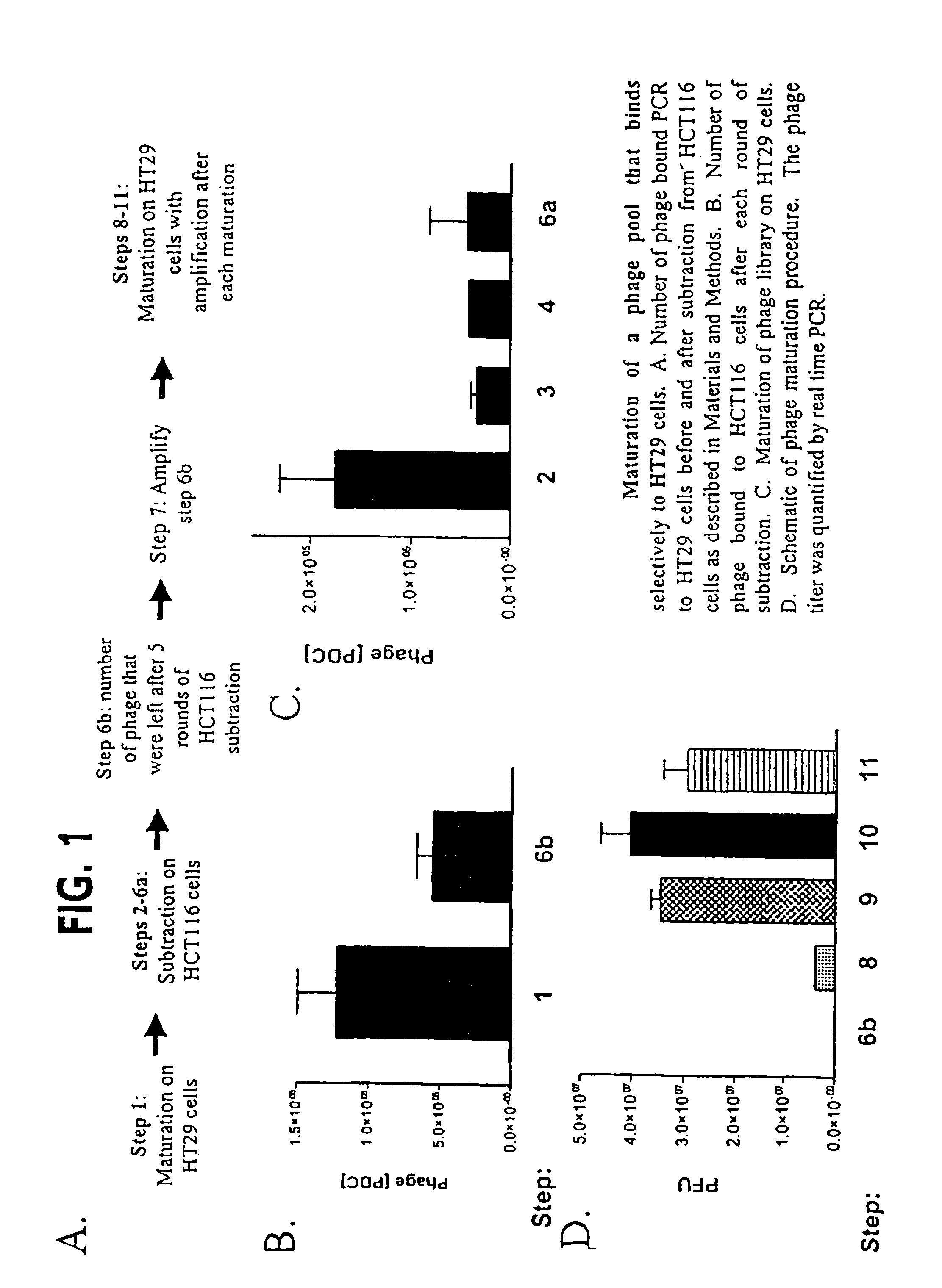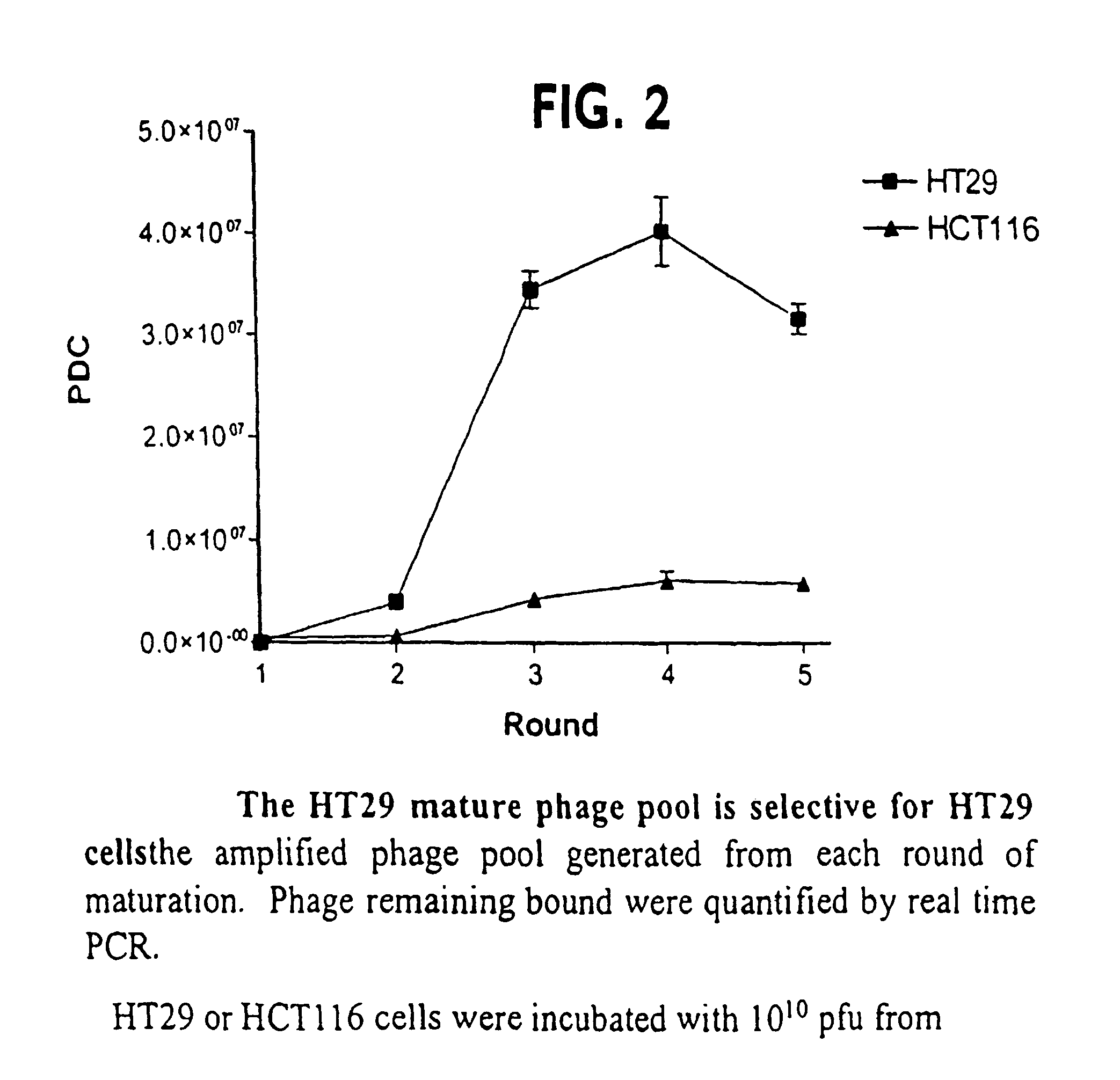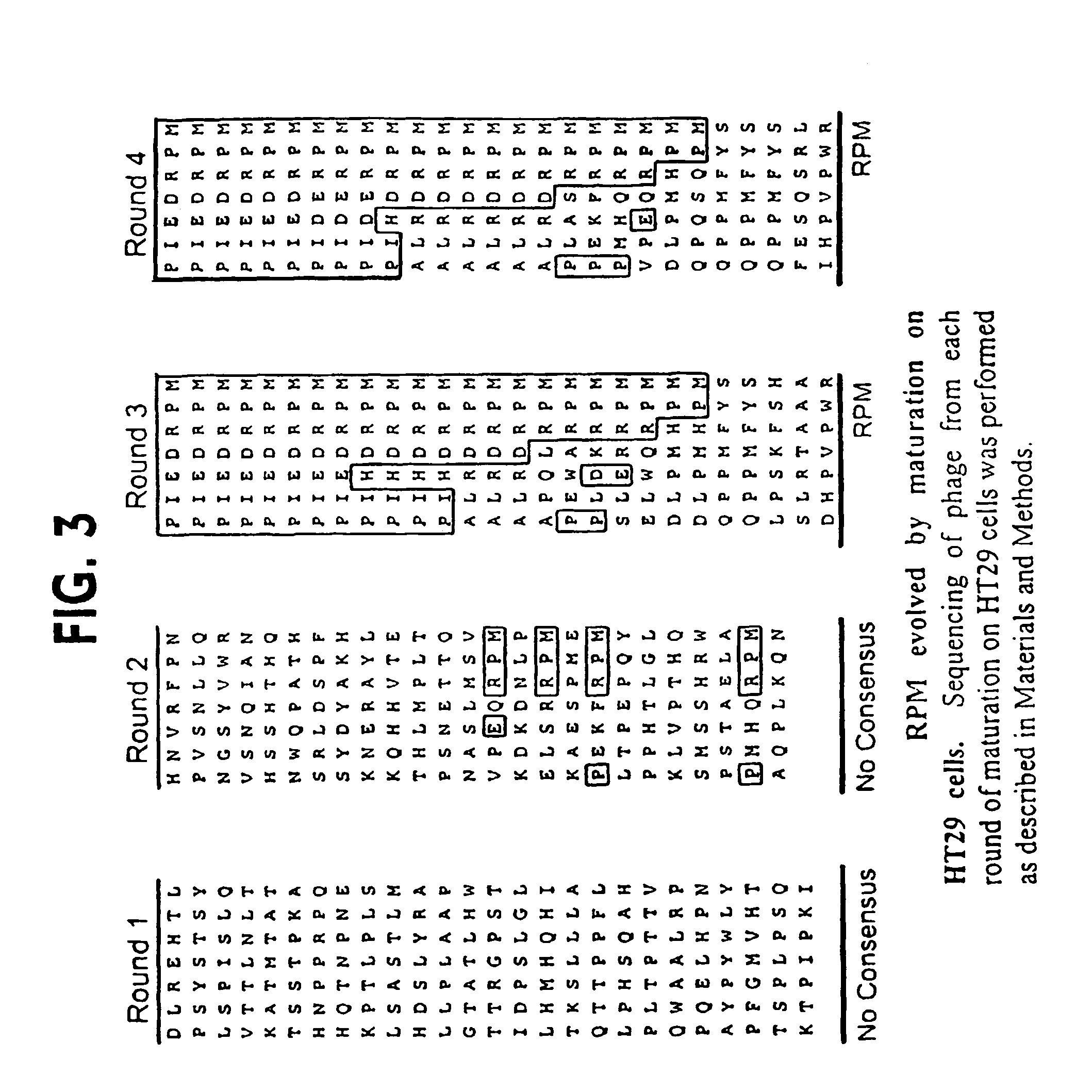Colon tumor specific binding peptides
a binding peptide and colon cancer technology, applied in the direction of peptide/protein ingredients, instruments, drug compositions, etc., can solve the problems of affecting the detection accuracy of colon cancer, so as to achieve the effect of reducing or substantially non-existent immunogenicity
- Summary
- Abstract
- Description
- Claims
- Application Information
AI Technical Summary
Benefits of technology
Problems solved by technology
Method used
Image
Examples
examples
Materials and Methods
[0074]Generation of HS-1. An aliquot (10 ul) of the C7C complete phage library from New England Biolabs (Beverley, Mass.) was incubated with 2×105 cells HT29 cells at 4C for 45 minutes in PBS with 0.5% BSA (binding buffer). After incubation, cells were washed with PBS / 0.5% BSA / 0.05% Tween (wash buffer) for a total of 6 washes. Phage that bound were eluted with 0.2M glycine (pH 2.2) for 8 minutes then neutralized with 50 uL of 1 M Tris-HCl (pH 9.0). After elution, phage were PEG-NaCl precipitated then resuspended in 300 uL of binding buffer and incubated with 2.0×105 HCT116 cells at 4° C. for 45 minutes a total of 5 incubations (steps 2-6). The phage that did not bind to the HCT116 cells were amplified (step 7) then incubated with 2×105 HT29 cells as above. Cells were washed to remove unbound phage and the bound phage was eluted. The number of phage bound was determined and the remaining eluate was amplifed. The amplified phage was used with the same number of HT...
PUM
| Property | Measurement | Unit |
|---|---|---|
| pH | aaaaa | aaaaa |
| pH | aaaaa | aaaaa |
| concentration | aaaaa | aaaaa |
Abstract
Description
Claims
Application Information
 Login to View More
Login to View More - R&D
- Intellectual Property
- Life Sciences
- Materials
- Tech Scout
- Unparalleled Data Quality
- Higher Quality Content
- 60% Fewer Hallucinations
Browse by: Latest US Patents, China's latest patents, Technical Efficacy Thesaurus, Application Domain, Technology Topic, Popular Technical Reports.
© 2025 PatSnap. All rights reserved.Legal|Privacy policy|Modern Slavery Act Transparency Statement|Sitemap|About US| Contact US: help@patsnap.com



